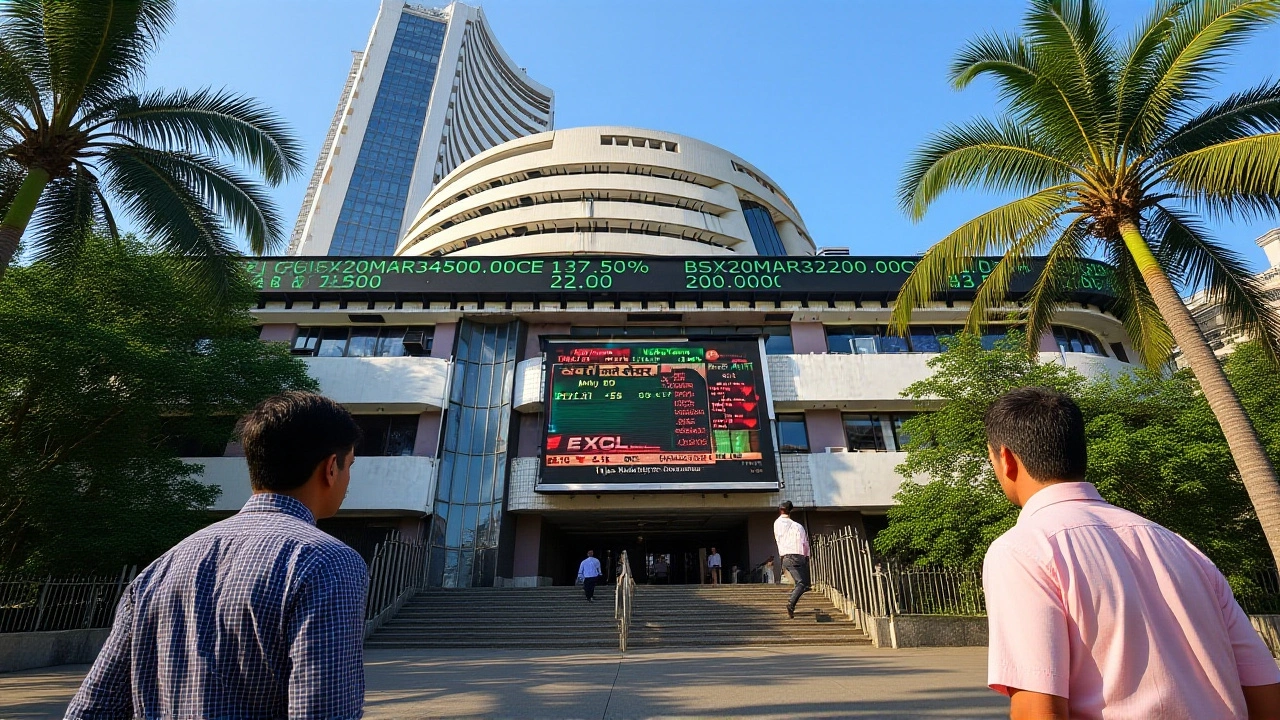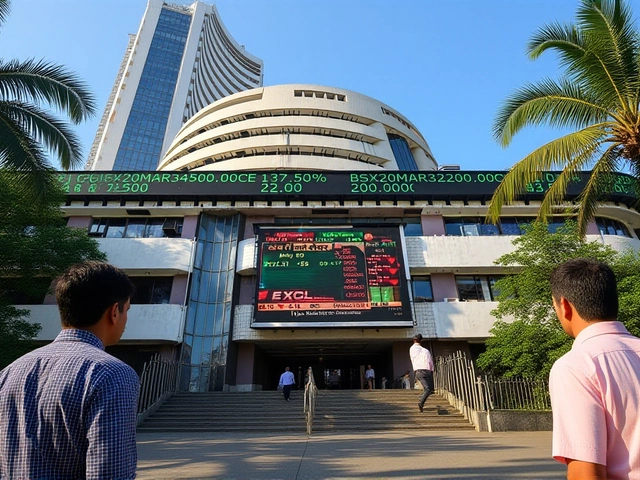
When LG Electronics India listed on October 14, 2025, the shares surged to a 50% premium over the Rs 1,140 issue price, instantly turning heads on both the National Stock Exchange (NSE) and the Bombay Stock Exchange (BSE) in Mumbai. The jump mattered because large‑cap offerings in India have long wrestled with a “big‑issue jinx” that drags down pricing. Here’s the thing: LG’s debut became the second most heavily subscribed IPO of 2025, eclipsing even the massive Tata Capital offering that opened just a day earlier with a modest 1.2% premium.
Background: Indian IPO Landscape in 2025
India’s equity market has been on a tear, propelling the country to the world’s fourth‑largest IPO hub last year. A string of mega‑offers – from fintech unicorns to infrastructure giants – has lured both domestic and foreign money. Yet, the record shows a pattern: the bigger the issue, the harder it is to sustain a healthy premium. Analysts point to investor fatigue and macro‑headwinds as culprits.
Against this backdrop, the LG Electronics India IPO listingMumbai was anything but a routine filing; it was a litmus test for whether quality can truly beat pricing anxieties.
LG Electronics India: From Launch to Listing
Founded in 1997, LG Electronics India has grown into a household name across TVs, refrigerators, washing machines, microwaves, and air conditioners. The firm boasts a debt‑free balance sheet, a return on equity that consistently tops 30%, and EBITDA margins nudging above 10%.
What set this IPO apart was the valuation discipline – priced at 35 times FY25 earnings, a sweet spot compared with peers trading at 45‑60 times. The company also unveiled a localisation roadmap, aiming to lift domestic raw‑material sourcing from 54% to 63% by FY29, a move expected to tighten margins and cushion foreign‑exchange volatility.
Numbers That Turn Heads: Subscription & Premium Details
The offering comprised a fresh equity raise of Rs 6,846 crore plus an offer‑for‑sale tranche worth Rs 8,665 crore. In the three‑day book‑building window (Oct 7‑9), investors placed bids for over 65 crore shares – nearly double the allotment – driving an overall subscription of 1.96 times. Qualified Institutional Buyers (QIBs) were the most enthusiastic, hitting a 3.4 times subscription, while retail interest lingered at 1.1 times.
When the bells chimed on Oct 14, the opening price settled at Rs 1,710, a full 50% above the issue price. By contrast, the day before, Tata Capital opened at a tepid Rs 340, barely 1.2% above its issue price of Rs 326.
Analyst Take: Valuation, Growth and Strategic Moves
Ambit Capital launched coverage with a “Buy” rating and a 12‑month target of Rs 1,820, citing localisation, premiumisation, export upside, and a post‑GST demand revival. The note projected 11% revenue CAGR and 13% EBITDA CAGR through FY28.
“LG’s under‑penetration across categories leaves ample room for growth,” the analyst wrote. “The Six City plant will double capacity and lift exports by four percentage points by FY28 E.”
Meanwhile, Anand Rathi also jumped on board, pegging a target of Rs 1,725 – a 51% upside from the listing price – and flagging the firm’s strong distribution network and after‑sales service as competitive moats.
Motilal Oswal echoed the optimism, setting a Rs 1,800 target and justifying a higher multiple based on “robust return ratios, superior cash‑flow conversion and a clear localisation strategy.”
The consensus among brokers is clear: LG’s blend of solid fundamentals, disciplined pricing, and growth‑oriented investments makes it a standout in a sea of over‑hyped listings.
Market Reaction & Future Outlook
Beyond the numbers, the debut sparked a broader conversation about the health of India’s capital markets. If a high‑quality consumer‑electronics player can break the jinx, it signals to other large‑cap firms that investors are willing to reward clear‑cut earnings visibility and strategic clarity.
Looking ahead, the firm’s Six City plant – slated to double output by FY28 – could push export share up by four points, while the domestic localisation push may shave 150‑200 basis points off gross margins. Coupled with a pipeline of OLED TVs and inverter ACs, the growth story appears far from over.
For the market, the key takeaway is that valuation prudence paired with tangible growth levers can revive confidence in mega‑IPOs, even when global economic clouds loom.
Key Takeaways
- LG Electronics India listed at a 50% premium, the highest for a 2025 IPO beyond the Rs 10,000‑crore bracket.
- Subscription hit 1.96 times overall, with QIBs at 3.4 times.
- Analysts value the stock at 35 × FY25 earnings – markedly cheaper than peers.
- Strategic localisation aims to lift domestic sourcing to 63% by FY29.
- Future growth driven by capacity expansion at the Six City plant and premium‑product launches.
Frequently Asked Questions
How does the LG Electronics India IPO affect retail investors?
Retail investors saw a modest subscription of 1.1 times, indicating cautious appetite. However, the 50% premium at debut offers a quick‑win opportunity for those who secured allocation, especially as analysts forecast earnings growth that could sustain higher valuations.
What makes LG Electronics India’s valuation attractive compared to peers?
At 35 × FY25 earnings, LG trades well below the 45‑60 × range of other consumer‑electronics firms. The gap reflects a debt‑free balance sheet, a ROE above 30%, and clear localisation plans that promise margin expansion.
Why did Tata Capital’s IPO underperform on the same day?
Tata Capital’s issue was priced more conservatively at a 1.2% premium, reflecting investor concerns over its mixed‑asset profile and lower subscription enthusiasm from retail segments.
What are the main growth drivers for LG Electronics India post‑IPO?
Key drivers include the expansion of the Six City manufacturing hub, a push to increase domestic raw‑material sourcing, premium product launches like OLED TVs and inverter ACs, and a targeted 4‑percentage‑point rise in export share by FY28.
Will the success of this IPO change the outlook for future large‑cap listings in India?
Analysts believe it sets a precedent that disciplined pricing and strong fundamentals can overcome the historic ‘big‑issue jinx.’ Expect more heavyweight firms to revisit valuation strategies and highlight tangible growth catalysts in upcoming offerings.


